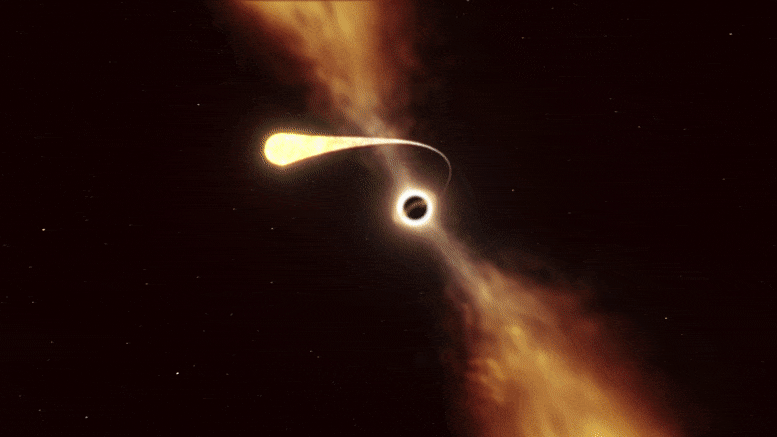Key Takeaways:
- A supermassive black hole in galaxy LID-568 is consuming material 40 times faster than its theoretical limit.
- This rate is beyond the Eddington limit, a threshold where radiation pressure should slow down accretion.
- Observed just 1.5 billion years post-Big Bang, this black hole could reveal how early black holes grew so massive.
- The discovery of such a fast-feeding black hole could clarify how supermassive black holes gain mass rapidly.
- This “super-Eddington” black hole feeding mode might be an essential clue to the evolution of black holes in the early universe.
____________
This black hole, about 7.2 million solar masses, defies known limits on accretion rates.

An Unprecedented Black Hole “Feast” Offers Clues to Early Cosmic Mysteries
A supermassive black hole in the galaxy LID-568 has stunned scientists with its voracious feeding behavior, consuming material at a rate over 40 times the Eddington limit. Found in a galaxy from just 1.5 billion years after the Big Bang, this extreme case could offer insight into how early black holes amassed such enormous sizes in such a short time. Led by astronomer Hyewon Suh of Gemini Observatory and NSF’s NOIRLab, a research team discovered this unique black hole using observations from the James Webb Space Telescope (JWST).
Defying the Eddington Limit
A black hole’s feeding process produces light and radiation as matter spirals toward it, creating what’s called an accretion disk. As the matter heats, it emits powerful radiation that, in turn, exerts pressure outward. When this radiation pressure equals the gravitational pull of the black hole, accretion should theoretically slow down—a state known as the Eddington limit. This newly observed black hole, however, defies the rule.
The team detected this supermassive black hole in LID-568, which emits radiation levels far exceeding the Eddington limit. The supermassive black hole is only about 7.2 million solar masses, yet the material surrounding it produces much more light than expected for a black hole of this size. This intensity indicates a “super-Eddington” accretion phase, where the black hole’s mass grows rapidly as it consumes material at an astounding rate. According to astronomer Julia Scharwächter of Gemini Observatory, this discovery provides a rare opportunity to observe a supermassive black hole in a brief yet intense feeding stage.

JWST and a New Window into the Early Universe
Using JWST’s NIRSpec spectrograph, Suh’s team pinpointed the galaxy’s location, confirming its vast distance from Earth. Although the galaxy appears faint from our viewpoint, its brightness at such a distance signals extraordinary intrinsic luminosity. Additionally, they observed powerful outflows from the black hole, characteristic of active feeding as it consumes and expels material into space. This fortunate observation offers a glimpse of super-Eddington processes, which may explain why some black holes in the early universe reached immense sizes so quickly.
The formation of supermassive black holes remains a mystery. One theory posits that these giants may have originated from massive gas clouds collapsing directly into black holes, rather than forming from smaller stellar remnants. Super-Eddington accretion could be another contributing factor, enabling smaller black holes to rapidly gain mass. Suh notes that this “fast-feeding mechanism” above the Eddington limit may explain the mass growth of early black holes regardless of their origin, providing a key piece in solving the puzzle of cosmic evolution.
This discovery not only sheds light on the growth of early black holes but also emphasizes the importance of super-Eddington accretion episodes. As more observations focus on LID-568 and similar galaxies, scientists hope to reveal further clues about the universe’s infancy and how supermassive black holes came to exist so soon after the Big Bang.
The research has been published in Nature Astronomy.




